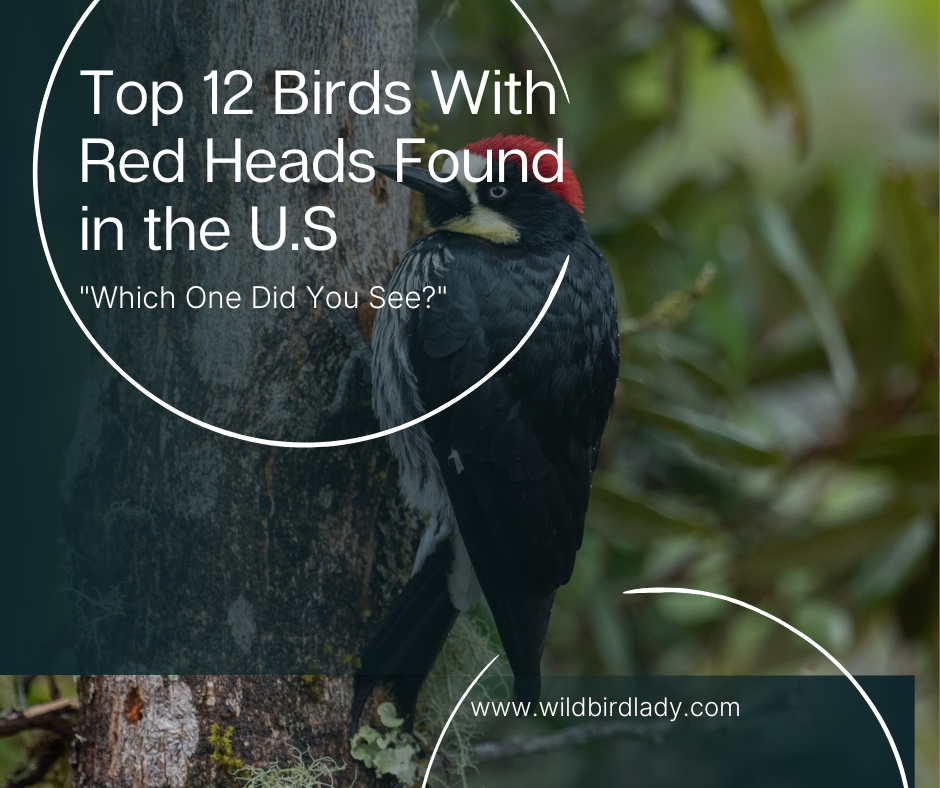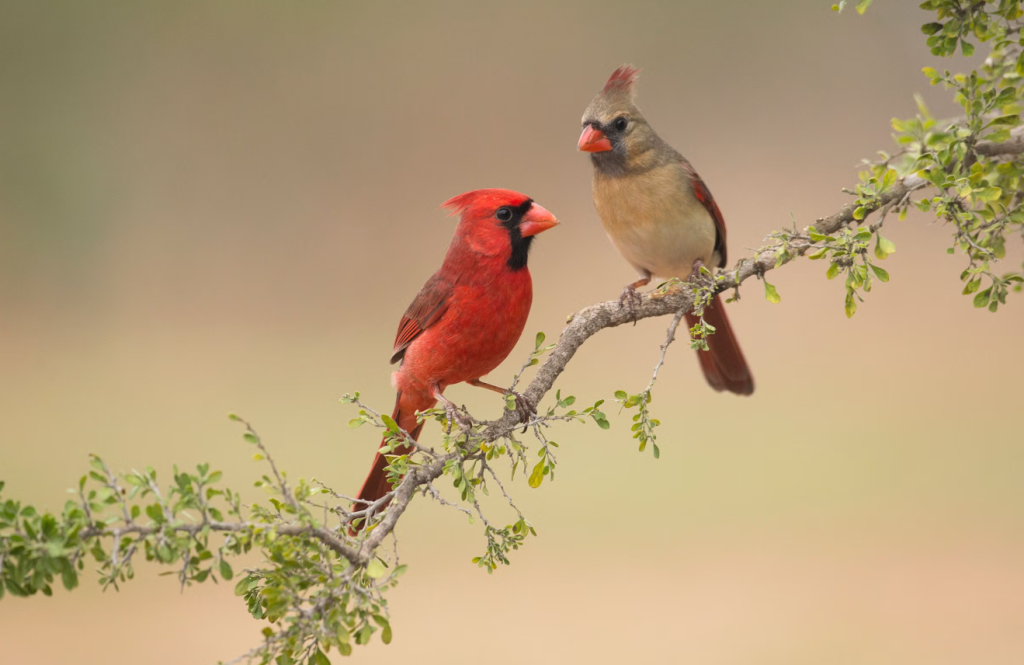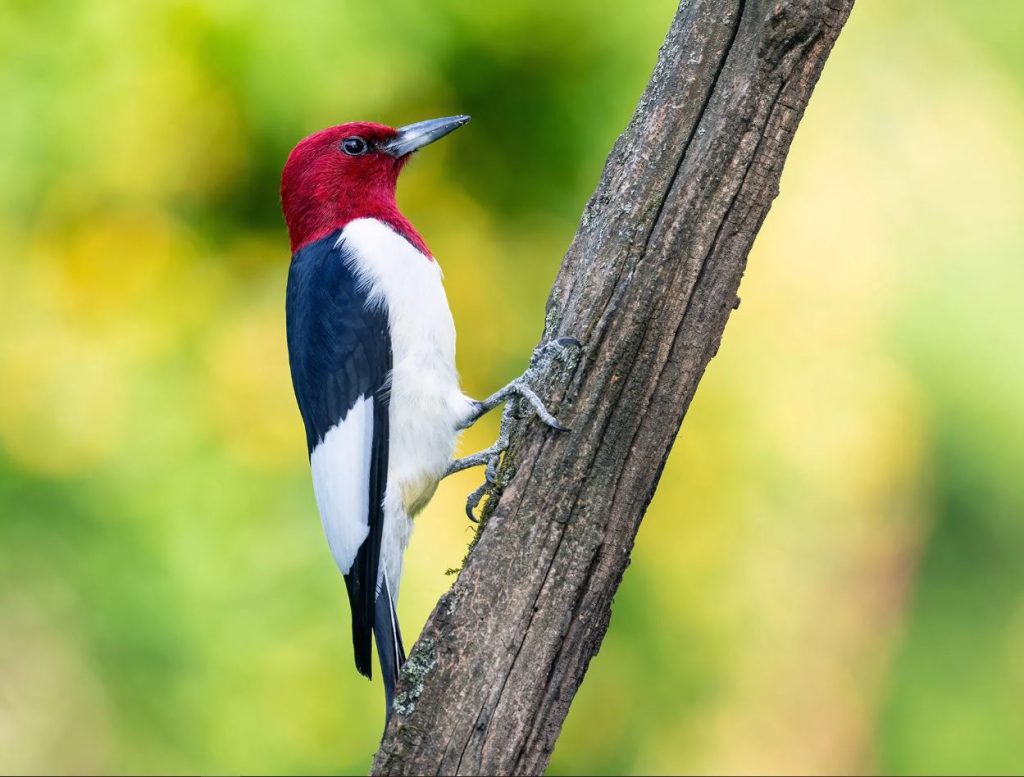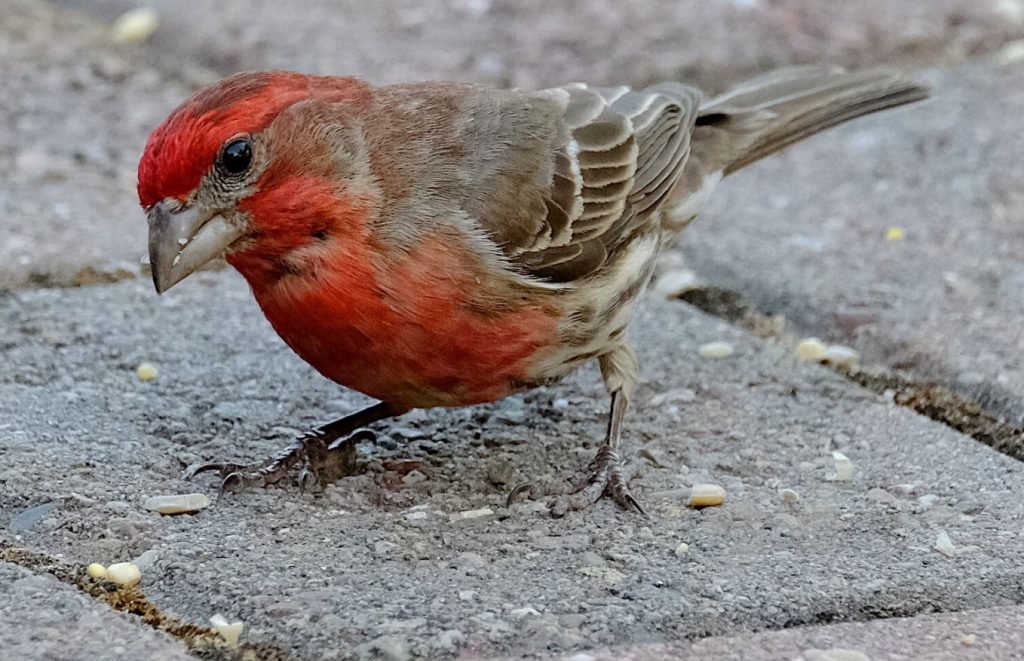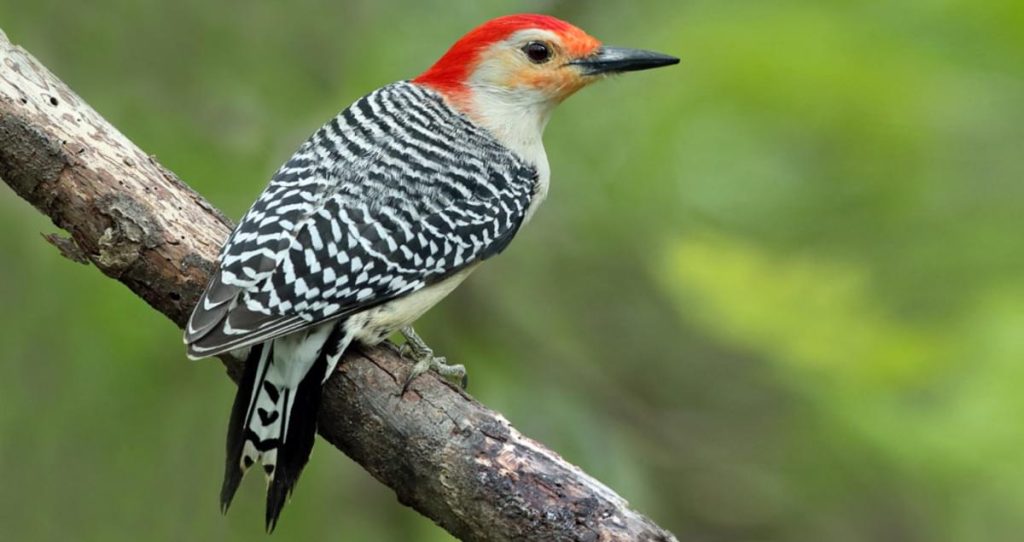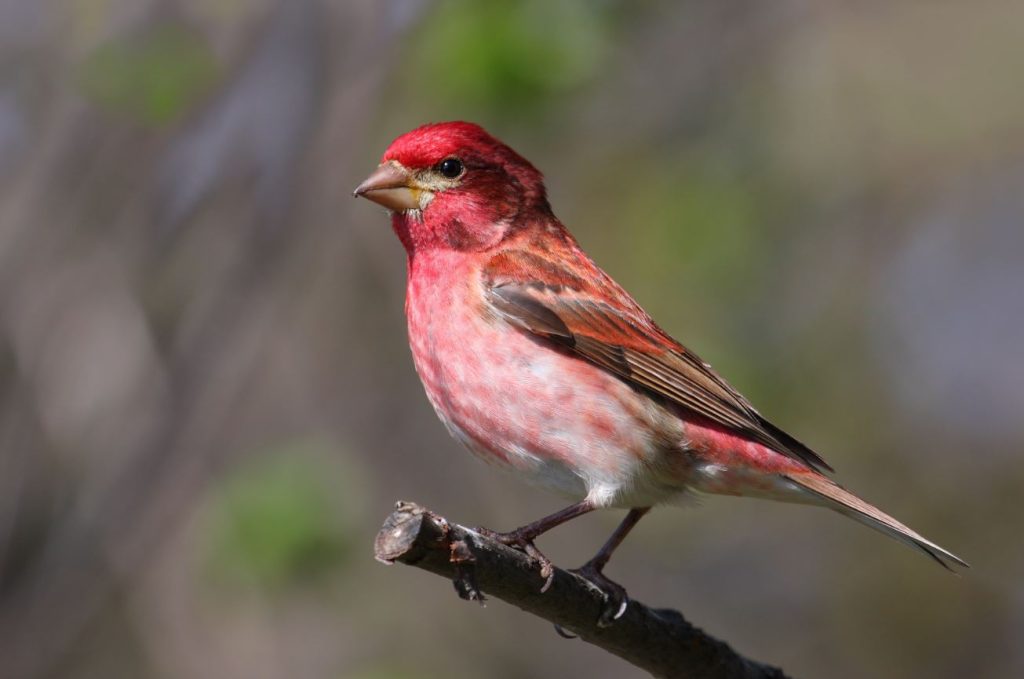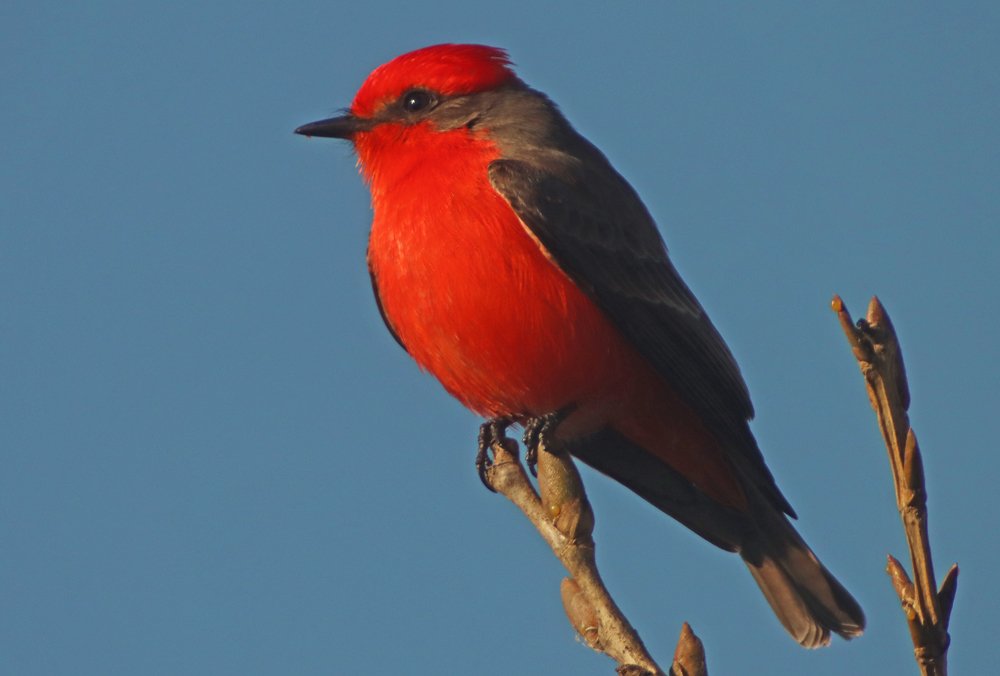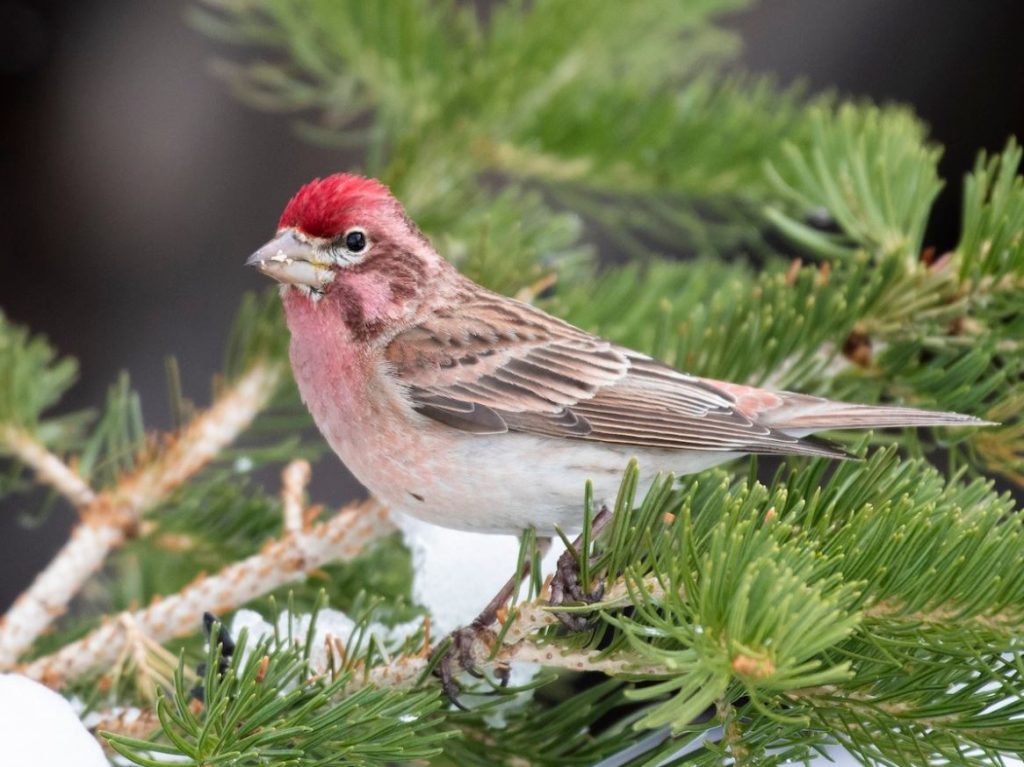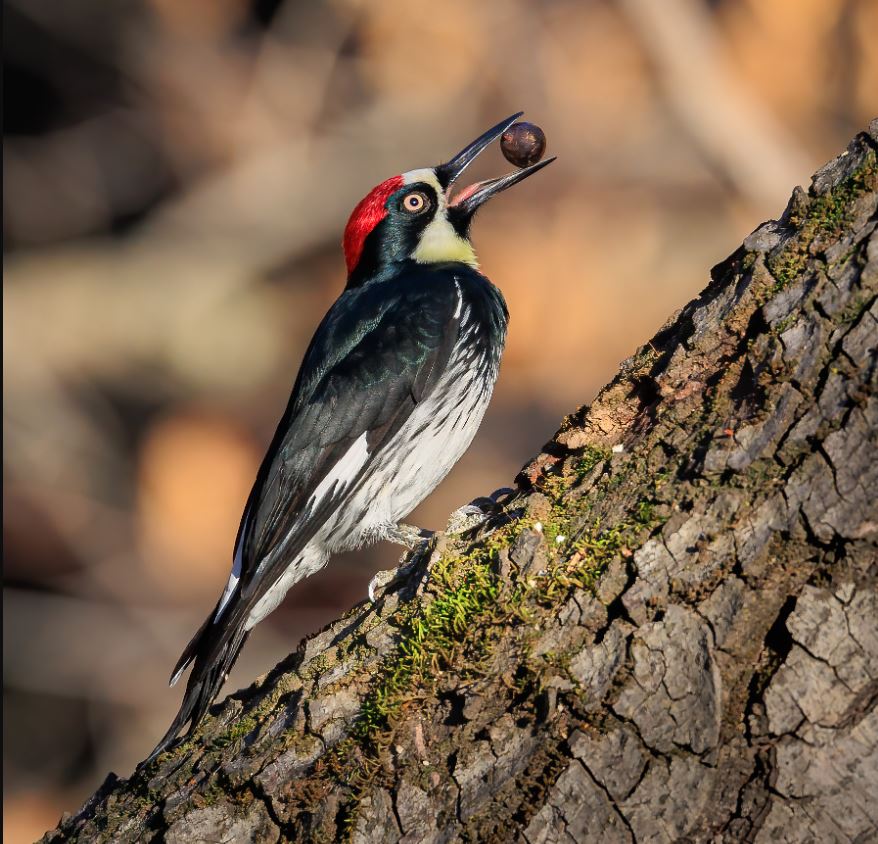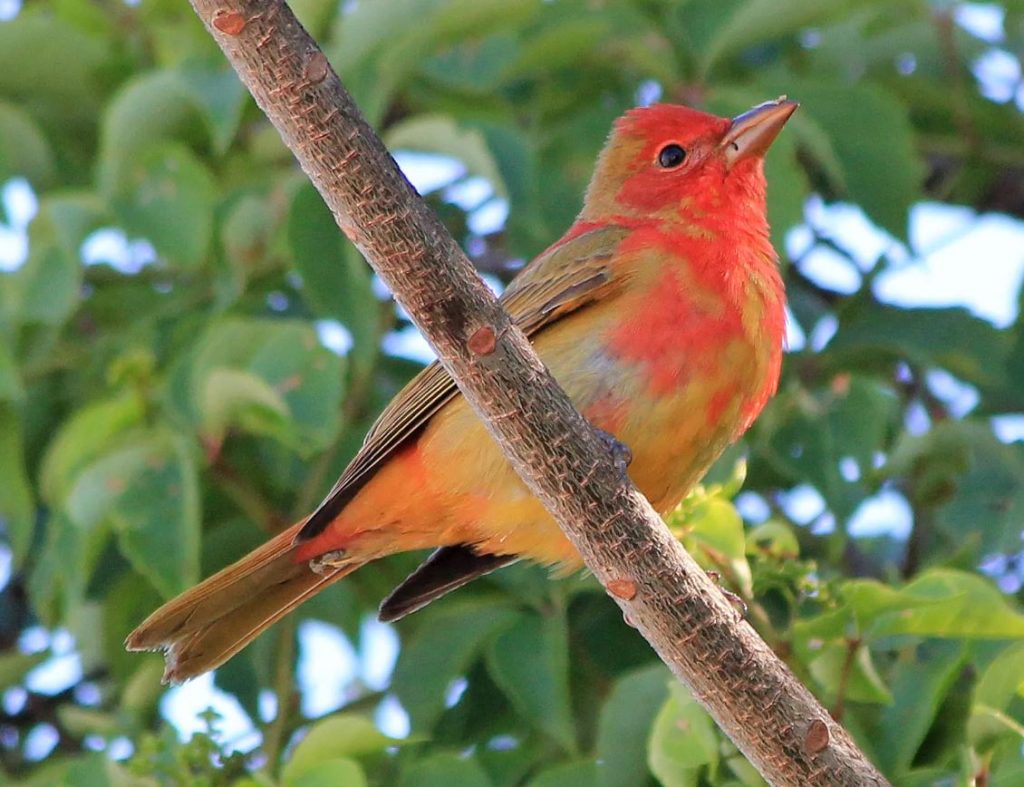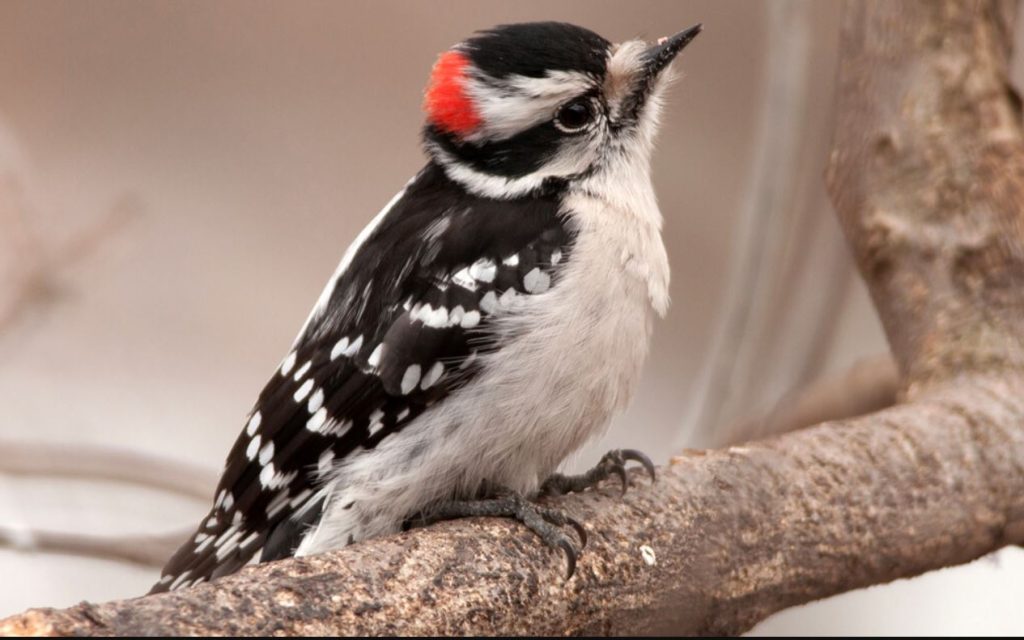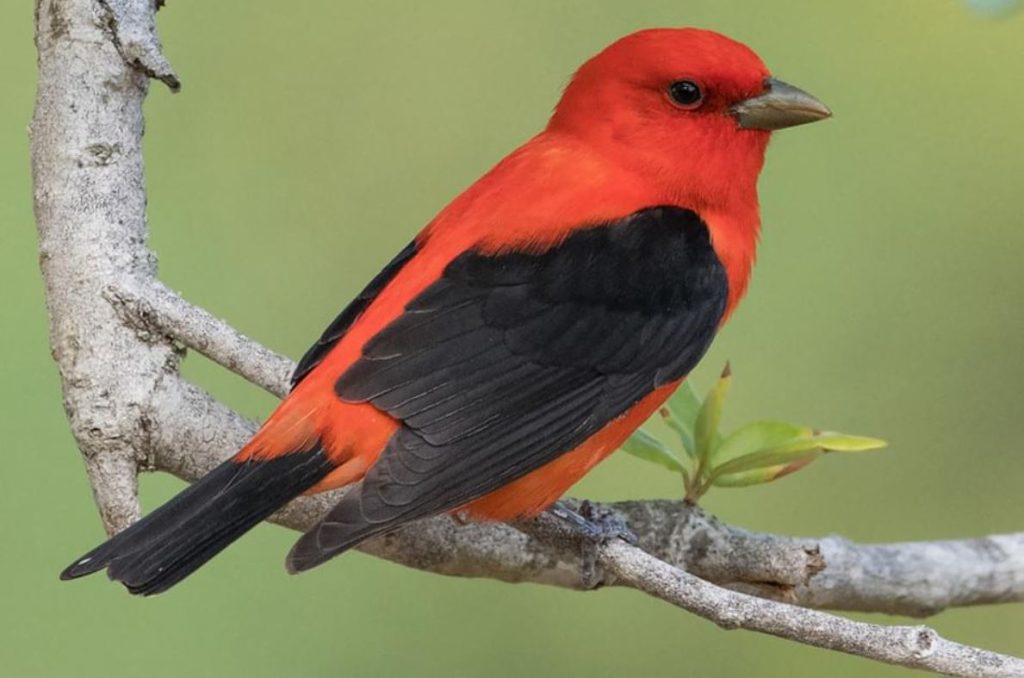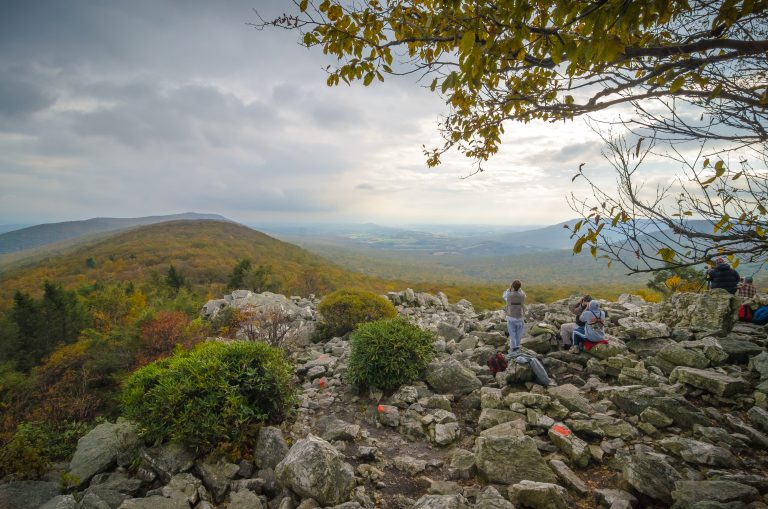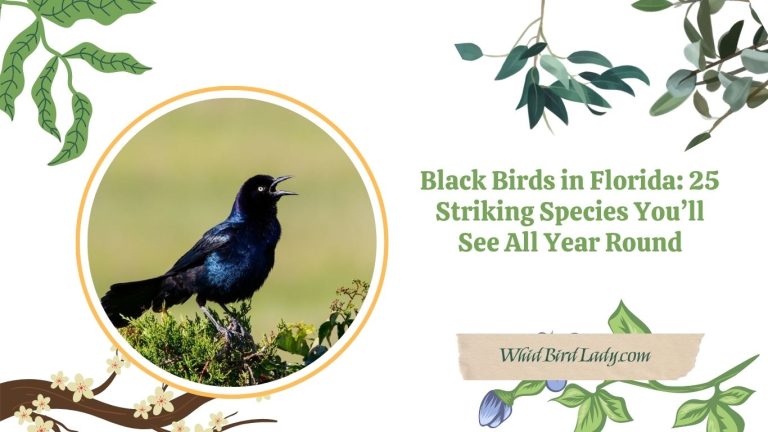Top 12 Birds With Red Heads Found in the U.S.—Which One Did You See?
Hello fellow bird lovers! I’m Rifat Ahmed, and I’ve been birdwatching across the United States for the past 13 years. From dense pine forests in the Pacific Northwest to the sunlit backyards of suburban Florida, I’ve had the joy of observing countless species. But few sights capture my attention quite like a bird with a brilliant red head. It’s a color that pops against the green canopy, often signaling beauty, confidence, and sometimes, territorial feistiness.
In this article, I’ll take you through the Top 10 Birds With Red Heads Found in the U.S., based on my years of field experience and some good old-fashioned love for feathered creatures. If you recently saw a flash of crimson darting across your backyard or local park, chances are it was one of these stunning birds.
Top 12 Birds With Red Heads (Most Beautiful & Common) in North America
Let’s dive into the list!
1. Northern Cardinal
Scientific Name: Cardinalis cardinalis
Where to Find It: Eastern and Central U.S., especially common in backyards and suburban areas.
Arguably the most iconic red-headed bird in America, the Northern Cardinal is a year-round resident in much of the U.S. The males are unmistakable with their full crimson plumage and proud crest. The females are more subtle in color but still sport a reddish tint on the crest and wings.
Size: 8.3–9.1 in (21–23 cm)
Weight: 1.5–1.7 oz (42–48 g)
Habitat & Diet: Prefers woodland edges, gardens, and shrublands. Diet includes seeds, fruits, and insects.
Breeding Season: Spring to mid-summer. Typically lays 2–4 eggs per clutch.
ID Tips: Look for the prominent crest and thick orange-red bill. Males are entirely red; females are brown with red accents.
Vocalizations: Known for rich, melodious whistles. Hear it here (Cornell Lab) (© Cornell Lab of Ornithology)
Rifat’s Field Note:
I once saw a pair sharing seeds in an Illinois garden during a snowstorm. The male’s red feathers against the white snow? Breathtaking. is a year-round resident in much of the U.S. The males are unmistakable with their full crimson plumage and proud crest. The females are more subtle in color but still sport a reddish tint on the crest and wings.
2. Red-headed Woodpecker
Scientific Name: Melanerpes erythrocephalus
Where to Find It: Eastern and Central U.S., often in open woodlands and farmlands.
This stunning bird looks like it was painted by an artist. Its full crimson head, snow-white belly, and jet-black wings are a striking combination. These woodpeckers are cavity nesters and love dead trees for drumming and nesting.
Size: 7.5–9.1 in (19–23 cm)
Weight: 2.0–3.4 oz (56–97 g)
Habitat & Diet: Open woodlands, forest edges, and farmlands. Feeds on insects, fruits, nuts, and occasionally small vertebrates.
Breeding Season: Late spring to summer. Nests in tree cavities; both parents feed the young.
ID Tips: Entire head is deep red; sharp black and white contrast on wings and back.
Vocalizations: Loud raspy calls. Hear it here (Cornell Lab) (© Cornell Lab of Ornithology)
Rifat’s Tip:
Look for them near old fence posts or forest edges. Early mornings are best!**
3. House Finch (Male)
Scientific Name: Haemorhous mexicanus
Where to Find It: Nationwide in urban, suburban, and desert areas.
Only the males display the red coloring, usually on the head and chest. The intensity of the red can vary depending on their diet—those who eat more berries tend to have brighter hues.
Size: 5.1–5.5 in (13–14 cm)
Weight: 0.6–0.9 oz (16–27 g)
Habitat & Diet: Found in cities, parks, and deserts. Eats seeds, buds, and fruits.
Breeding Season: Spring to late summer; nests in building crevices or hanging planters.
ID Tips: Males have reddish head and chest, streaked brown body. Females are brown and streaky.
Vocalizations: Warbling, cheerful song. Hear it here (Cornell Lab) (© Cornell Lab of Ornithology)
Rifat’s Field Note:
I watched a male House Finch build a nest in my porch light fixture in Phoenix. He was unfazed by my presence—true urban survivors!**
4. Red-bellied Woodpecker
Scientific Name: Melanerpes carolinus
Where to Find It: Eastern U.S., especially in forests and wooded suburbs.
Despite the name, it’s the head, not the belly, that is most noticeably red in this species. The males have a red cap that runs from the bill to the nape, while females have a red nape and crown.
Size: 9.4 in (24 cm)
Weight: 2.0–3.2 oz (56–91 g)
Habitat & Diet: Forests, woodlands, and backyards. Eats insects, nuts, fruits, and seeds.
Breeding Season: Early spring to midsummer; nests in tree cavities.
ID Tips: Barred black-and-white back, red crown (male full; female partial).
Vocalizations: Rolling ‘churr’ and ‘querr’ calls. Hear it here (Cornell Lab) (© Cornell Lab of Ornithology)
Rifat’s Tip:
Their loud rolling calls make them easy to locate before you even see them.**
5. Purple Finch (Male)
Scientific Name: Haemorhous purpureus
Where to Find It: Northeastern U.S., Appalachians, and parts of the Pacific Northwest during winter migrations.
Don’t let the name fool you—male Purple Finches wear a raspberry-red wash on their heads and upper bodies that can appear quite vivid in the right light. They’re slightly chunkier than House Finches and have a richer overall coloration.
Size: 4.7–6.3 in (12–16 cm)
Weight: 0.6–1.1 oz (18–32 g)
Habitat & Diet: Mixed forests, feeders, and shrubby areas. Feeds on seeds, buds, and berries.
Breeding Season: Late spring to early summer; builds nests in conifers or dense shrubs.
ID Tips: Males have a reddish head and chest with no streaking on the belly; females are brown with bold facial markings.
Vocalizations: Rich, warbling songs and a sharp “pik.” Hear it here (Cornell Lab) (© Cornell Lab of Ornithology)
Rifat’s Field Note:
I once mistook a male Purple Finch for a raspberry-colored ornament hanging in a snowy Vermont pine. The soft red against the snow-covered branches was pure poetry.
6. Vermilion Flycatcher (Male)
Scientific Name: Pyrocephalus rubinus
Where to Find It: Southwestern U.S., especially in Arizona, New Mexico, and Texas near open scrublands and rivers.
This small flycatcher flaunts one of the most brilliant red crowns and underparts in North America. The contrast with its dark brown back makes it unmistakable.
Size: 5.1–5.5 in (13–14 cm)
Weight: 0.4–0.5 oz (11–14 g)
Habitat & Diet: Arid woodlands, riparian areas. Feeds on flying insects caught midair.
Breeding Season: Spring to summer. Builds cup nests in low branches.
ID Tips: Males are bright red with dark brown wings and back; females are pale with a pinkish wash.
Vocalizations: Short, sweet twitters and chirps. Hear it here (Cornell Lab) (© Cornell Lab of Ornithology)
Rifat’s Tip:
Early morning in Tucson, I watched one dance through the air after gnats like a scarlet flame. Trust me—it’s worth waking up for.
7. Cassin’s Finch (Male)
Scientific Name: Haemorhous cassinii
Where to Find It: Mountainous regions of the West, especially the Rockies and Sierra Nevada.
A close relative of the House and Purple Finches, the male Cassin’s Finch has a bright raspberry-red crown that can glow like an ember in alpine sunlight.
Size: 6.0 in (15 cm)
Weight: 0.8–1.0 oz (24–28 g)
Habitat & Diet: Coniferous forests and montane meadows. Eats seeds, buds, and berries.
Breeding Season: Late spring to early summer; nests high in evergreens.
ID Tips: Male has red crown, lighter underparts, and less streaking than House Finches.
Vocalizations: Crisp, musical song with rising trills. Hear it here (Cornell Lab) (© Cornell Lab of Ornithology)
Rifat’s Field Note:
Saw one perched on a pine in Colorado’s San Juan Mountains. He sang for a good ten minutes without moving—nature’s tiny opera singer.
8. Acorn Woodpecker
Scientific Name: Melanerpes formicivorus
Where to Find It: Oak woodlands in California, Arizona, New Mexico, and parts of Texas.
These clowns of the oak forests sport a bright red cap, white face, and glossy black body. They’re known for storing thousands of acorns in holes they drill into trees—nature’s hoarders!
Size: 7.5–9.1 in (19–23 cm)
Weight: 2.3–3.2 oz (65–90 g)
Habitat & Diet: Oak forests, woodlands. Feeds on acorns, insects, fruits.
Breeding Season: Spring to early summer. Lives in cooperative family groups.
ID Tips: Red crown, white face, black mask; unique flight pattern and behavior.
Vocalizations: Loud, laughing calls. Hear it here (Cornell Lab) (© Cornell Lab of Ornithology)
Rifat’s Tip:
Find a granary tree (one full of holes packed with acorns), and you’ll likely find an Acorn Woodpecker colony. It’s a sight—and sound—you won’t forget.
9. Summer Tanager (Male)
Scientific Name: Piranga rubra
Where to Find It: Southern U.S., especially in deciduous woodlands and river corridors.
The male Summer Tanager is a uniform, rich red from head to tail—no patterns, no frills, just glorious red. Females, in contrast, are a warm mustard-yellow. They love bees and wasps, often snatching them mid-air.
Size: 6.7 in (17 cm)
Weight: 1.0–1.1 oz (28–30 g)
Habitat & Diet: Open woodlands, forest edges. Eats insects (especially wasps), fruits, and berries.
Breeding Season: Late spring to early summer. Nests in high branches.
ID Tips: Males are solid red, no markings; females are yellowish with olive wings.
Vocalizations: Smooth, robin-like phrases. Hear it here (Cornell Lab) (© Cornell Lab of Ornithology)
Rifat’s Field Note:
Once watched a male in Georgia meticulously pluck the stingers off wasps before swallowing them whole. Smart and striking!
10. Downy Woodpecker (Male)
Scientific Name: Dryobates pubescens
Where to Find It: Widespread across the U.S., in woodlands, parks, and backyards.
This is the smallest woodpecker in North America, but don’t let its size fool you. The male Downy Woodpecker sports a bold red patch on the back of his head—tiny but eye-catching. These birds are incredibly adaptable and frequently visit backyard feeders.
Size: 5.5–6.7 in (14–17 cm)
Weight: 0.7–1.0 oz (20–28 g)
Habitat & Diet: Deciduous forests, wooded suburbs. Eats insects, suet, seeds, and berries.
Breeding Season: Spring to early summer. Nests in small tree cavities.
ID Tips: White belly, black wings with white spots, and a red nape (males only). Often confused with the larger Hairy Woodpecker.
Vocalizations: Sharp “pik” calls and a soft drumming sound. Hear it here (Cornell Lab) (© Cornell Lab of Ornithology)
Rifat’s Tip:
They’re regulars at suet feeders. If you hang one out near a quiet tree line, you’ll likely get a visit—especially during winter months.
11. Pileated Woodpecker
Scientific Name: Dryocopus pileatus
Where to Find It: Eastern U.S., Pacific Northwest, and large forested areas across the country.
This is the king of North American woodpeckers. The Pileated Woodpecker’s flaming-red crest is dramatic, unmistakable, and often the first thing you’ll see as it hammers away at fallen logs or tree trunks. If you hear loud, echoing drumming in the woods, this is probably your bird.
Size: 16–19 in (40–49 cm)
Weight: 8.8–12.3 oz (250–350 g)
Habitat & Diet: Mature forests, especially with deadwood. Eats carpenter ants, beetle larvae, fruits, and nuts.
Breeding Season: Spring to early summer. Excavates large nest holes in trees.
ID Tips: Crow-sized; black body with white stripes on the face and neck, and a red crest.
Vocalizations: Loud, laughing “kuk-kuk-kuk.” Hear it here (Cornell Lab) (© Cornell Lab of Ornithology)
Rifat’s Field Note:
I once tracked a pair in North Carolina for 40 minutes. When they finally landed in full view on a hollow log, I nearly forgot to breathe. It felt like spotting a feathered dinosaur.
12. Scarlet Tanager (Male)
Scientific Name: Piranga olivacea
Where to Find It: Eastern U.S. forests during spring and summer.
One of the most dazzling sights in the eastern woods, the male Scarlet Tanager is a burst of fire-engine red with jet-black wings. These forest songbirds stay high in the canopy, so catching a glimpse is often a rewarding challenge.
Size: 6.3–6.7 in (16–17 cm)
Weight: 0.8–1.3 oz (23–38 g)
Habitat & Diet: Deciduous forests. Feeds on insects, caterpillars, and fruit.
Breeding Season: Late spring through midsummer. Nests high in tree branches.
ID Tips: Males are bright red with black wings; females are yellow-olive with dusky wings.
Vocalizations: Burry, robin-like song; distinct “chip-burr” call. Hear it here (Cornell Lab) (© Cornell Lab of Ornithology)
Rifat’s Tip:
Look for them during peak migration in May, especially in tall oak forests. Early morning light makes their scarlet plumage glow like embers through the leaves.
FAQ: Red-Headed Birds in the U.S.
What bird has a bright red head and black-and-white body?
That’s most likely the Red-headed Woodpecker (Melanerpes erythrocephalus). With its solid crimson head, white belly, and jet-black wings, it looks like a bird straight out of a painting. It’s most commonly found in open woodlands and farmland across the Eastern and Central U.S.
Are male birds more likely to have red heads than females?
Yes, in many species, males display brighter red coloring—especially during breeding season. This is common in birds like the House Finch, Scarlet Tanager, and Purple Finch, where the vivid red helps them attract mates. Females tend to have duller or more camouflaged plumage for nesting and protection.
What’s the difference between a Downy Woodpecker and a Hairy Woodpecker?
Great question! Both species look incredibly similar, but:
– Downy Woodpecker is smaller, with a shorter bill (about the same length as its head).
– Hairy Woodpecker is larger and has a noticeably longer, chisel-like bill.
If you see a tiny woodpecker with a red patch on the back of its head at your feeder, it’s probably a Downy.
When is the best time of year to spot red-headed birds?
Spring and early summer are ideal, especially during migration and breeding seasons. Birds like the Scarlet Tanager and Summer Tanager return to the U.S. from Central or South America during this time, and local residents like the Northern Cardinal are more vocal and active.
Can I attract red-headed birds to my backyard?
Absolutely! Here are a few simple tips:
– Use feeders with sunflower seeds or suet to attract cardinals, finches, and woodpeckers.
– Plant native berry-producing shrubs like dogwood, elderberry, or serviceberry.
– Avoid using pesticides so insect-eating birds like tanagers and woodpeckers have plenty to feed on.
– Install nest boxes or leave dead trees (snags) standing if safe—they’re vital for cavity nesters like woodpeckers.
Is it rare to see a Pileated Woodpecker?
Not exactly rare, but definitely thrilling! These crow-sized woodpeckers require large territories with mature trees, so you’re more likely to spot them in protected forests or state parks than in backyards. Their call and size make them unmistakable once seen—or heard.
Do all red-headed birds migrate?
Not all. Here’s a quick breakdown:
– Migratory: Scarlet Tanager, Summer Tanager, Purple Finch (partially), Vermilion Flycatcher.
– Year-round residents: Northern Cardinal, Red-bellied Woodpecker, Downy Woodpecker, Pileated Woodpecker, House Finch (in most areas).
So depending on the season, your backyard’s cast of red-headed characters can shift dramatically!
Final Thoughts: Which One Did You See?
Whether you spotted a crimson flash while sipping morning coffee or heard an echoing call deep in the woods, red-headed birds have a way of catching our eye and heart. Each of these 10 species offers something unique—from the fiery Vermilion Flycatcher to the majestic Pileated Woodpecker.
Birdwatching is about more than identification. It’s about the moment. The thrill. The story. After 13 years of observing these beautiful creatures, I still feel that same jolt of wonder every time I raise my binoculars.
So—which one did you see? Let me know in the comments or tag your photo on social media. And remember: keep your eyes open, your ears tuned, and your heart curious.
Happy birding!
Rifat Ahmed
13-year Birdwatching Veteran
Lover of all things feathered

